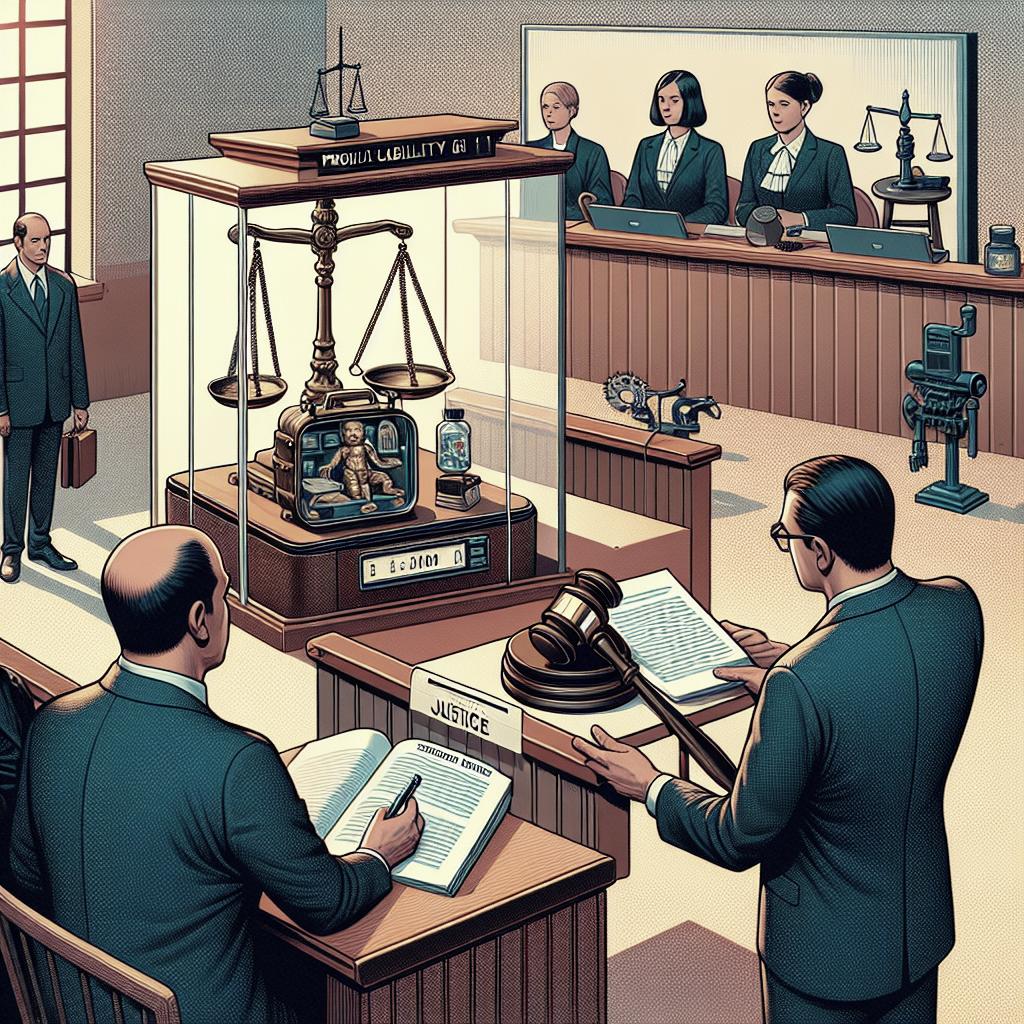“`html
Understanding Legal Standards in Product Liability Cases
Product liability is a pivotal area of law ensuring manufacturers and sellers are held accountable for distributing defective products. These legal standards protect consumers by providing them avenues for recourse when products cause harm. This blog post explores the essence of product liability, focusing on its definition, major areas, and applicable Canadian laws. We delve into identifying liable entities, scrutinize the strictness of liability in Canada, and provide insights on proving liability. Additionally, we list recent articles on the topic. Whether you’re a legal professional, a business owner, or a curious consumer, this article offers an in-depth understanding of product liability’s legal landscape.
What is a product liability?
Product liability refers to the legal responsibility of manufacturers, wholesalers, or retailers to ensure that products released to the market are free from defects that could cause harm. This area of law is critical, as it sets the standards for consumer protection against faulty products.
When a consumer suffers harm because of a defective product, they may have a legal claim against the maker or seller. Product liability thus acts as a deterrent against negligence and encourages businesses to prioritize safety and quality assurance throughout their production processes.
In general, product liability claims encompass defects in design, manufacturing, and marketing. These claims serve the dual purpose of compensating the injured party and promoting higher safety standards within industries.
Three major areas of product liability
The first major area is design defects, which exist when a product is inherently dangerous due to its design, even if manufactured correctly. Proving a design defect often involves demonstrating that an alternative design could have been safer and reasonably practicable.
Manufacturing defects occur when a product departs from its intended design during production. These errors can affect individual units, batches, or the entire production line, leading to potentially hazardous outcomes for the end-user.
The third area concerns marketing defects, which include inadequacies in labeling, instructions, or warnings. If a product fails to include proper usage instructions or warnings about its potential risks, the manufacturer or supplier could be held liable for resulting injuries.
Canadian laws on product liability
In Canada, product liability laws fall under both provincial and federal jurisdictions. The laws aim to ensure that consumers are protected when they buy products deemed safe for use under normal circumstances.
Two main legal theories support product liability claims in Canada: negligence and breach of warranty. Negligence occurs when a manufacturer or seller fails to provide a reasonable standard of care, while breach of warranty involves breaking a promise about a product’s safety or performance.
The legal framework in Canada also allows for class-action lawsuits, providing injured parties with a collective avenue to seek redress for widespread harm caused by defective products.
Liable entities for defective products
Different entities within the product supply chain can be held liable for defective products. Primarily, liability rests with manufacturers, who bear the responsibility of ensuring product safety from conception to production.
However, distributors, wholesalers, and retailers can also be liable under certain conditions. If it can be established that these parties knew or should have known about the defects, they may share responsibility in the resulting harm experienced by consumers.
Liability extends across borders, especially as the global market continues to expand. Consequently, companies that import and sell internationally must ensure compliance with local product safety standards to mitigate liability risks.
Is product liability strict in Canada?
The notion of strict liability implies that a plaintiff does not need to prove negligence for a product liability claim to succeed. In Canada, strict liability does not wholly apply; plaintiffs are generally required to demonstrate negligence or breach of warranty.
Nevertheless, Canadian courts have developed doctrines and legal principles that have effectively eased the burden of proof on plaintiffs. These include the “res ipsa loquitur” doctrine, meaning the facts speak for themselves, which can shift the onus onto defendants to prove their products were not defective.
Although not strictly impositional, the Canadian legal environment encourages robust safety and quality control measures, hoping to prevent and rapidly address product defects before causing consumer harm.
How do you prove product liability?
To successfully prove product liability, plaintiffs must satisfy several legal criteria. These typically include demonstrating that the product was defective, the defect caused injury, and the product was used as intended.
Plaintiffs need to provide evidence that ties the defect directly to the injury suffered, which could involve expert testimonials, reports, and material analyses. Establishing that the product was used in a foreseeable or intended manner further strengthens the claim.
The meticulous documentation of the purchase, maintenance, and use of the product is crucial. These records aid in linking the injury to the defect, thereby substantiating the liability claim for consumer protection and fair restitution.
Recent Articles
1. “The Evolution of Product Liability Law in Canada” by Jane Doe discusses how legal precedents shape manufacturers’ responsibilities.
2. “Navigating Product Recalls: Legal Implications and Strategies” by John Smith explores the complexities of recalling defective products and maintaining consumer trust.
3. “Case Study: Leading Product Liability Settlements of 2023” provides insights into significant legal battles and settlements in the product liability sector.
Final Thoughts
| Topic | Summary |
|---|---|
| What is a product liability? | Legal responsibility to ensure products are defect-free, with claims focused on design, manufacturing, and marketing defects. |
| Three major areas of product liability | Explores design, manufacturing, and marketing defects as critical areas addressing consumer safety. |
| Canadian laws on product liability | Combines federal and provincial statutes to protect consumers through negligence and breach of warranty claims. |
| Liable entities for defective products | Manufacturers, distributors, and retailers share liability, with a focus on preventing cross-border product defects. |
| Is product liability strict in Canada? | Not strictly imposed but encourages proof-easing doctrines to enhance consumer protection. |
| How do you prove product liability? | Plaintiffs must show defect, causation, and proper product use using solid documentation and evidence. |
| Recent Articles | Highlights latest discussions, strategies, and case studies in the product liability field. |
“`


